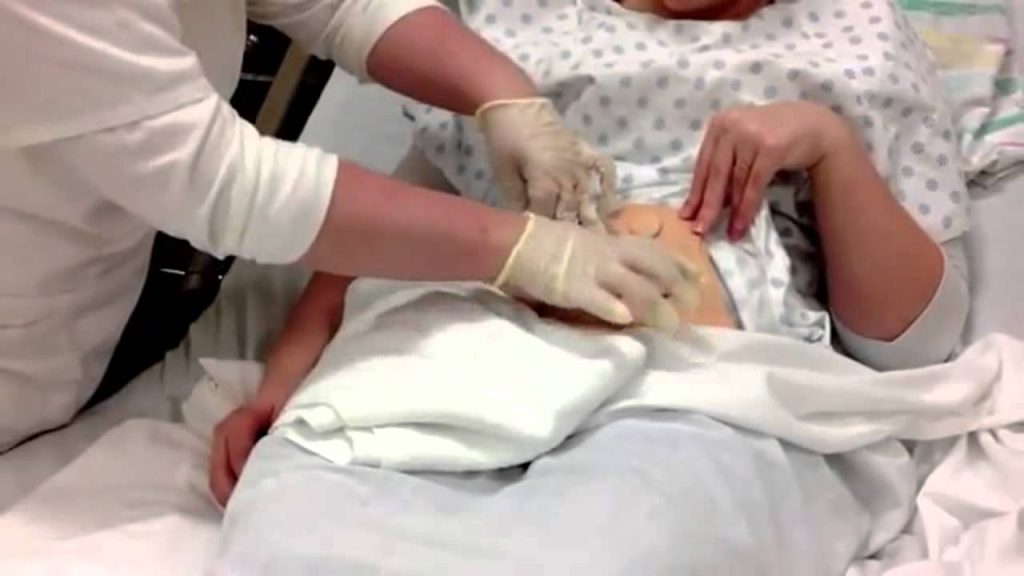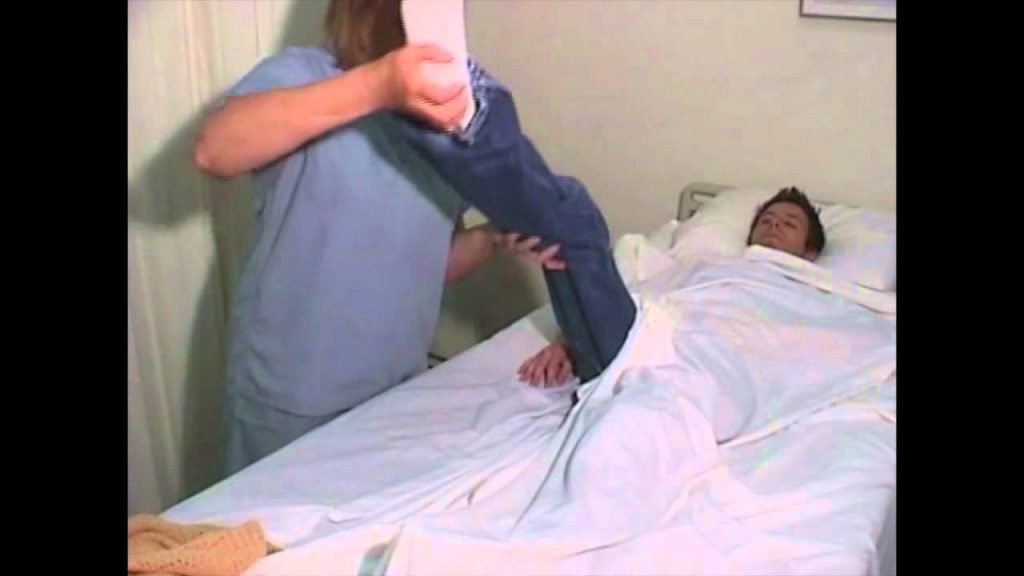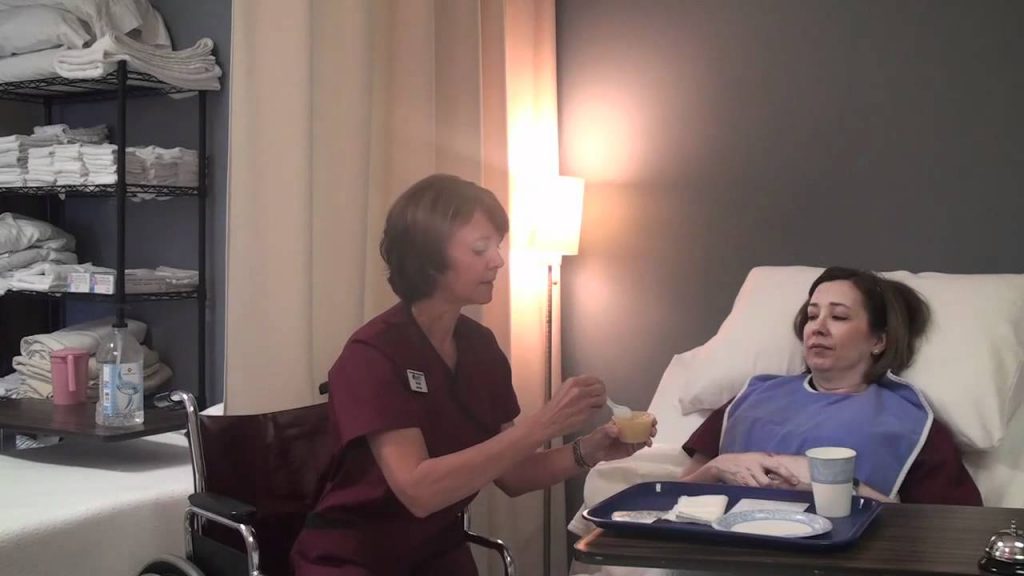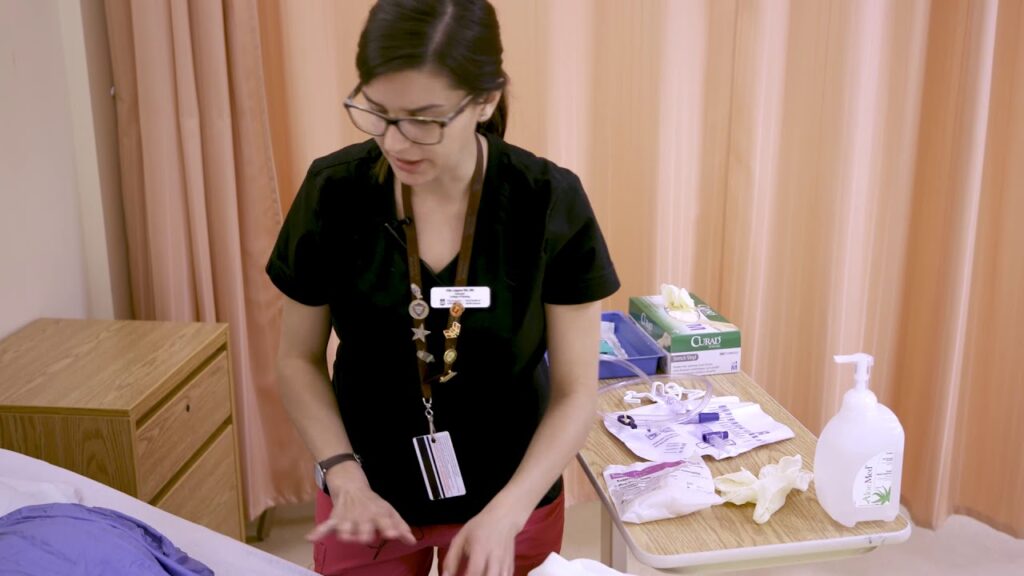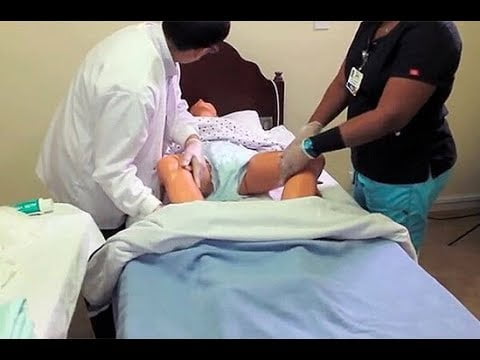
Archives: Procedures
Performing Ostomy Care
Residents who have had a portion of their intestines removed due to illness or trauma may have a temporary or permanent ostomy, which is an opening in the abdomen that is created for the elimination of urine or feces. The portion of the intestine that is connected to the abdominal wall and is visible is called the stoma. A pouch is placed over the stoma ... Read More
Passive Range of Motion Exercises
Range of motion exercises are used to help prevent or decrease contractures, improve flexibility of joints, and improve strength [1]. Bedridden patients as well as those with reduced mobility may greatly benefit from passive range of motion exercises. However, do not perform these exercises without an order to do so, as it may be contraindicated in certain situations ... Read More
Feeding the Patient
Not all patients will need help feeding themselves. Some patients will only need assistance opening cartons or cutting their food. To promote independence, always let the patient do as much as he or she can before assisting. It is vitally important that the nurse's aide verifies that the patient receives the correct meal tray. Patients may have special diets that play a critical role in ... Read More
Applying Restraints
Restraints have very strict guidelines for use due to the number of complications that can result. Use of restraints is associated with increased physical and psychosocial health issues. Restraints are only considered necessary when restraint-free alternatives have failed and the patient or others are at risk of harm without the restraints. It is illegal to use restraints for the staff's convenience or to punish the ... Read More
Measuring and Recording Output from a Urinary Drainage Bag
Accurate measurement of urination (aka, the output portion of intake and output) allows medical personnel to assess kidney and bladder function. Changes in output quantity or quality can reflect health status changes including new-onset infection or renal injury ... Read More
Indwelling Catheter Care
Indwelling catheters allow urine to drain from the bladder. They are used when residents are unable to urinate on their own or when the process of cleaning the resident after urination would be difficult for the resident to tolerate (such as during end of life care). Caring for the catheter appropriately is a vital part of preventing infection and skin breakdown ... Read More
Applying a Condom Catheter
Condom catheters are used for men who are incontinent. These catheters are external and are meant to be used short-term and changed daily ... Read More
Perineal Care of the Male Resident
Perineal care should be performed during a bath, after using the bedpan, and/or after incontinence. Special care should be used when performing perineal care on an uncircumcised male. Failure to retract and wash the area under the foreskin can result in infection. Failure to return the foreskin to its normal position can result in paraphimosis ... Read More
Removing Personal Protective Equipment
It is important to follow the correct procedure while removing personal protective equipment to avoid contaminating your skin or clothing. The most common source of contamination in this process stems from improper removal of gloves. Gloves are often the most soiled piece of equipment. To avoid contaminating your skin or the other equipment worn, gloves should always be removed first. Then remove the goggles, gown, ... Read More
Putting on Personal Protective Equipment
Personal protective equipment is worn to protect the mouth, nose, eyes, clothing, and skin from unwanted pathogens. In the health care setting, a patient's condition often prompts the use of personal protective equipment; however, a health care worker is able to wear personal protective equipment whenever he or she deems it is necessary (e.g., during procedures with the potential for excessive contact with bodily fluids) ... Read More

